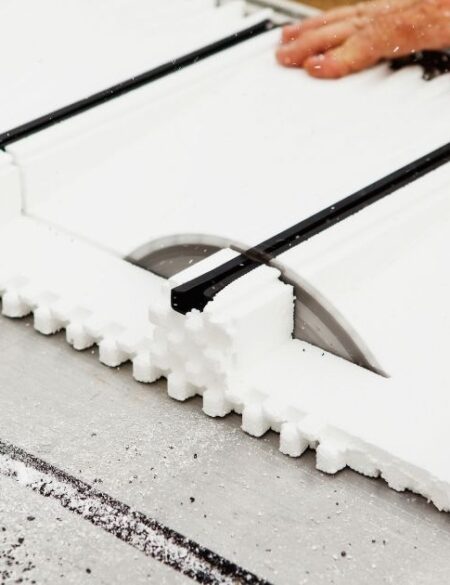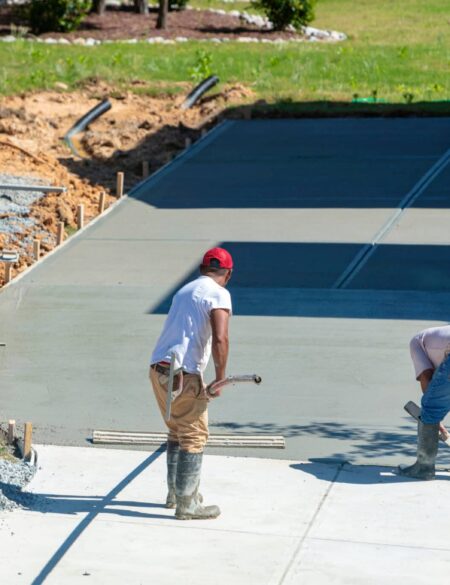Brick veneer is gaining popularity among homeowners, and for good reason. You can install brick veneer onto an existing structure to get the classic look of brick construction.
If you’re considering this option, you should understand what brick veneer is, its advantages and disadvantages, and how it compares to solid brick construction. This guide will explore everything you need to know about brick veneer, from installation to maintenance, to help you make an informed decision for your next home improvement project.
Understanding Brick Veneer
Brick veneer is a thin layer of brick you can use as an exterior cladding system. Unlike solid masonry walls that support a building’s structure, brick veneer relies on the structural walls behind it for stability.
Brick Veneer Vs. Solid Brick
Here are the key distinctions between brick veneer and solid brick:
- Structure: Brick veneer is a non-load-bearing exterior finish, while solid brick serves as a structural component.
- Installation: Veneer is attached to an existing wall structure, whereas solid brick is built from the ground up.
- Weight: Veneer is significantly lighter than solid brick construction.
- Insulation: Brick veneer allows for an air gap between the brick and the wall, providing additional insulation.
Advantages of Brick Veneer
Brick veneer offers a range of benefits that make it an attractive option for homeowners. A wide variety of material colors and sizes is available, making it easy to find a design that complements your home’s aesthetic. It’s also cheaper than solid brick construction, with lower labor and material costs.
In addition, brick veneer also boosts insulation. The air cavity between the brick and the wall acts as an additional insulator, improving energy efficiency.
Disadvantages of Brick Veneer
While brick veneer has many advantages, installation can be challenging and time consuming for beginners. Another downside is that it has weaker thermal conduction properties compared to some other cladding materials. And without proper drainage (weep holes), brick veneer can trap moisture inside the wall over time.
Where To Install Brick Veneer
Brick veneer is versatile, and you can use it in various locations, both indoors and outdoors. Popular applications include accent walls in living rooms or bedrooms, fireplace surrounds, exterior facades for homes and commercial buildings, and garden walls and landscaping features.
Indoor and Outdoor Application of Brick Veneer
The installation process for brick veneer differs depending on whether it’s being used indoors or outdoors.
Indoor Installation
For interior walls, the process typically involves applying mortar to the wall surface (typically cement board) and installing bricks on top of the mortar, using plastic spacers to create uniform gaps between the bricks. Lastly, you seal or fix the bricks once the mortar has dried.
Outdoor Installation
Outdoor brick veneer installation is more complex. First, wrap the exterior wall withTyvek® HomeWrap® to prevent water intrusion. Then, attach concrete board to the exterior wall and apply the brick veneer to the cement backing with mortar joints. Next, build from the bottom up on a proper foundation while providing adequate drainage and ventilation.
The requirements for installing brick veneer outdoors are more rigorous. You need to pay extra attention to weatherproofing and structural integrity to make sure that the brick veneer can withstand outdoor elements.
Common Problems with Brick Veneer
While brick veneer is a durable and attractive option, homeowners should be aware of potential issues.
Installation Problems
Brick veneer must be installed properly to maximize its lifespan and preserve its appearance. Common installation issues include uneven brick placement, inconsistent mortar joint thickness, and improper anchoring to the structural wall.
To avoid these problems, hire a skilled mason or professional contractor to install your brick veneer.
Weak Brick Joints
The integrity of brick veneer depends largely on the quality of its joints. A typical installation has thousands of joints, and each is a potential weak point. Mortar joints must be properly sealed and shaped so the application will be strong enough.
Keeping the joints in good condition ensures the brick veneer remains structurally sound over the years, so have it inspected annually and repaired as needed.
Repointing Mortar
Over time, the mortar may deteriorate and require repointing. This involves removing damaged mortar and replacing it with new material. Matching the color of existing mortar can be challenging, though, so consider hiring a pro for best results.
Cleaning Brick Veneer
Here are our tips for cleaning and maintaining brick veneer to maintain its appearance and integrity:
- Use mild detergent and a medium-bristle brush for regular cleaning.
- Avoid high-pressure washing, which can damage the brick and mortar.
- Clean stains and mold growth quickly to prevent them from spreading.
- Regularly clear weep holes to ensure proper drainage.
- Inspect and maintain caulk joints annually.
- Remove any plant growth on the veneer.
Cost of Brick Veneer
The cost of brick veneer varies based on several factors, including the manufacturer, design, color, and thickness. It typically costs between $5 and $12 per square foot, according to Angi.
Installation costs may add significantly to the overall expense and average between $3 to $20 per square foot for labor.
Since installation can be complex, hiring pros ensures the work is done correctly, helping avoid future repair costs. Discuss and price out your scope of work with multiple contractors to find the one that suits you best.
Longevity of Brick Veneer
With proper installation and maintenance, brick veneer can be a long-lasting exterior option—high-quality brick veneer can last 50 years or more. Regular maintenance and prompt repairs can extend its lifespan, but how long it lasts also depends on factors such as climate and installation quality.
Final Thoughts
Brick veneer offers homeowners a cost-effective way to achieve the classic look of brick without the structural complexity of solid masonry. Its versatility for both indoor and outdoor uses makes it an attractive option for many home improvement projects.
While there are challenges, such as proper installation and moisture management, the benefits of brick veneer often outweigh the drawbacks. If you’re considering brick veneer, weigh the pros and cons carefully and seek professional guidance.











